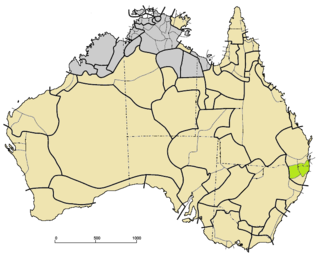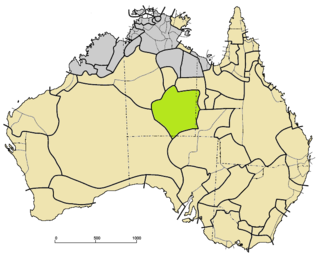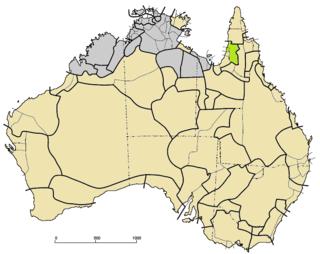Related Research Articles
In articulatory phonetics, a consonant is a speech sound that is articulated with complete or partial closure of the vocal tract, except for the h sound, which is pronounced without any stricture in the vocal tract. Examples are and [b], pronounced with the lips; and [d], pronounced with the front of the tongue; and [g], pronounced with the back of the tongue;, pronounced throughout the vocal tract;, [v], and, pronounced by forcing air through a narrow channel (fricatives); and and, which have air flowing through the nose (nasals). Most consonants are pulmonic, using air pressure from the lungs to generate a sound. Very few natural languages are non-pulmonic, making use of ejectives, implosives, and clicks. Contrasting with consonants are vowels.

A retroflex, apico-domal, or cacuminalconsonant is a coronal consonant where the tongue has a flat, concave, or even curled shape, and is articulated between the alveolar ridge and the hard palate. They are sometimes referred to as cerebral consonants—especially in Indology.
English phonology is the system of speech sounds used in spoken English. Like many other languages, English has wide variation in pronunciation, both historically and from dialect to dialect. In general, however, the regional dialects of English share a largely similar phonological system. Among other things, most dialects have vowel reduction in unstressed syllables and a complex set of phonological features that distinguish fortis and lenis consonants.
Velarization or velarisation is a secondary articulation of consonants by which the back of the tongue is raised toward the velum during the articulation of the consonant. In the International Phonetic Alphabet, velarization is transcribed by one of four diacritics:
YRM, or yrm, may refer to:
Bininj Kunwok is an Australian Aboriginal language which includes six dialects: Kunwinjku, Kuninjku, Kundjeyhmi, Manyallaluk Mayali (Mayali), Kundedjnjenghmi, and two varieties of Kune. Kunwinjku is the dominant dialect, and also sometimes used to refer to the group. The spellings Bininj Gun-wok and Bininj Kun-Wok have also been used in the past, however Bininj Kunwok is the current standard orthography.

Kowanyama is a town and coastal locality in the Aboriginal Shire of Kowanyama, Queensland, Australia.
Sa or Saa language is an Austronesian language spoken in southern Pentecost Island, Vanuatu. It had an estimated 2,500 speakers in the year 2000.
Yir-Yoront was a Paman language spoken in two settlements, Kowanyama and Pormpuraaw on the southwestern part of the Cape York Peninsula, Queensland in Australia, by the Yir-Yoront people. In 1991 only 15 speakers remained, with the rest of the Yir-Yoront people speaking English or even Kuuk Thaayorre as many speakers of Yir-Yoront apparently are using Kuuk Thaayorre in daily conversation. At present it is thought to be extinct. There are two sister dialects, Yir-Yoront proper and Yirrk-Thangalkl, which are very close. The shared name Yir is sometimes used for both taken together.

Yugambeh–Bundjalung, also known as Bandjalangic, is a branch of the Pama–Nyungan language family, that is spoken in north-eastern New South Wales and South-East Queensland.

Arrernte or Aranda, or sometimes referred to as Upper Arrernte, is a dialect cluster in the Arandic language group spoken in parts of the Northern Territory, Australia, by the Arrernte people. Other spelling variations are Arunta or Arrarnta, and all of the dialects have multiple other names.

The Paman languages are an Australian language family spoken on Cape York Peninsula, Queensland. First noted by Kenneth Hale, Paman is noteworthy for the profound phonological changes which have affected some of its descendants.

The Aboriginal Shire of Kowanyama is a special local government area which is located on western Cape York Peninsula in Queensland, Australia. It is managed under a Deed of Grant in Trust under the Local Government Act 2004.

The Southwestern Paman languages are a family of the Paman languages spoken on the western part of the Cape York Peninsula of Queensland, Australia.
The Yir-Yoront, also known as the Yir Yiront, are an Indigenous Australian people of the Cape York Peninsula now living mostly in Kowanyama but also in Lirrqar/Pormpuraaw, both towns outside their traditional lands.
The Uw Oykangand, otherwise known as the Kwantari, are an Aboriginal Australian people living on the southwestern part of the Cape York Peninsula, in the state of Queensland in Australia. Their neighbours to the northwest are the Yir-Yoront people. Their traditional lands are around the Alice River and the Crosbie River, and further west around the Mitchell River and into Gulf Country.
The Burarra language is an Australian Aboriginal language spoken by the Burarra people of Arnhem Land. It has several dialects.
The Wemba Wemba language is an extinct Aboriginal Australian language once spoken along the Murray River and its tributaries in North Western Victoria and South Central New South Wales.
The Kokangol (Koko-Gol), or Yuwula, are said to have been an Indigenous Australian people of Queensland. Some dispute this, suggesting the name may be a synonym for Aghu Tharnggala, or may simply be the name of a language consultant.
The Ajabakan were an indigenous Australian people of the Cape York Peninsula of Queensland.
References
- ↑ Yirrk-Thangalkl at Ethnologue (25th ed., 2022)

- ↑ Y214 Yirrk-Thangalkl at the Australian Indigenous Languages Database, Australian Institute of Aboriginal and Torres Strait Islander Studies
- ↑ RMW Dixon (2002), Australian Languages: Their Nature and Development, p xxxii
- ↑ Alpher, Barry (1991). Yir-Yoront lexicon: Sketch and dictionary of an Australian language.